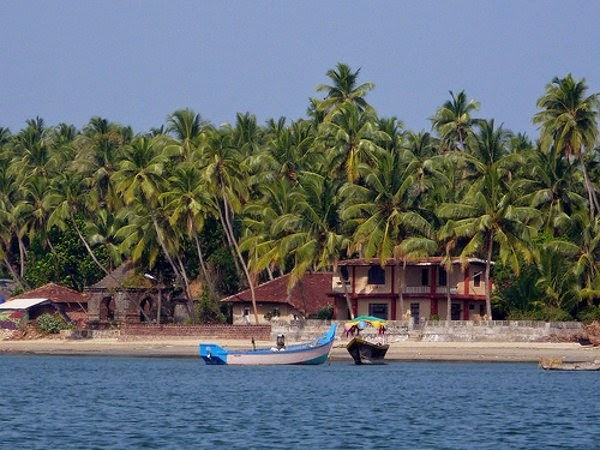गोगाजी महाराज( सिद्धनाथ वीर गोगादेव)
गोगाजी राजस्थान के लोक देवता हैं जिन्हे जाहरवीर गोगाजी के नाम से भी जाना जाता है । राजस्थान के हनुमानगढ़ जिले का एक शहर गोगामेड़ी है। यहां भादव शुक्लपक्ष की नवमी को गोगाजी देवता का मेला भरता है। इन्हे हिन्दु और मुस्लिम दोनो पूजते है ।
वीर गोगाजी गुरुगोरखनाथ के परमशिस्य थे। चौहान वीर गोगाजी का जन्म विक्रम संवत 1003 में चुरू जिले के ददरेवा गाँव में हुआ था सिद्ध वीर गोगादेव के जन्मस्थान, जो राजस्थान के चुरू जिले के दत्तखेड़ा ददरेवा में स्थित है। जहाँ पर सभी धर्म और सम्प्रदाय के लोग मत्था टेकने के लिए दूर-दूर से आते हैं। कायम खानी मुस्लिम समाज उनको जाहर पीर के नाम से पुकारते हैं तथा उक्त स्थान पर मत्था टेकने और मन्नत माँगने आते हैं। इस तरह यह स्थान हिंदू और मुस्लिम एकता का प्रतीक है।
मध्यकालीन महापुरुष गोगाजी हिंदू, मुस्लिम, सिख संप्रदायों की श्रद्घा अर्जित कर एक धर्मनिरपेक्ष लोकदेवता के नाम से पीर के रूप में प्रसिद्ध हुए। सन्न 1155 में गोगा जाहरवीर का जन्म राजस्थान के ददरेवा (चुरू) चौहान वंश के राजपूत शासक जैबर (जेवरसिंह) की पत्नी बाछल के गर्भ से गुरु गोरखनाथ के वरदान से भादो सुदी नवमी को हुआ था। जिस समय गोगाजी का जन्म हुआ उसी समय एक ब्राह्मण के घर नाहरसिंह वीर का जन्म हुआ। ठीक उसी समय एक हरिजन के घर भज्जू कोतवाल का जन्म हुआ और एक भंगी के घर रत्ना जी भंगी का जन्म हुआ। यह सभी गुरु गोरखनाथ जी के शिष्य हुए। गोगाजी का नाम भी गुरु गोरखनाथ जी के नाम के पहले अक्षर से ही रखा गया। यानी गुरु का गु और गोरख का गो यानी की गुगो जिसे बाद में गोगा जी कहा जाने लगा। गोगा जी ने गूरू गोरख नाथ जी से तंत्र की शिक्षा भी प्राप्त की थी।
चौहान वंश में राजा पृथ्वीराज चौहान के बाद गोगाजी वीर और ख्याति प्राप्त राजा थे। गोगाजी का राज्य सतलुज सें हांसी (हरियाणा) तक था। जयपुर से लगभग 250 किमी दूर स्थित सादलपुर के पास दत्तखेड़ा (ददरेवा) में गोगादेवजी का जन्म स्थान है। दत्तखेड़ा चुरू के अंतर्गत आता है। गोगादेव की जन्मभूमि पर आज भी उनके घोड़े का अस्तबल है और सैकड़ों वर्ष बीत गए, लेकिन उनके घोड़े की रकाब अभी भी वहीं पर विद्यमान है। उक्त जन्म स्थान पर गुरु गोरक्षनाथ का आश्रम भी है और वहीं है गोगादेव की घोड़े पर सवार मूर्ति। भक्तजन इस स्थान पर कीर्तन करते हुए आते हैं और जन्म स्थान पर बने मंदिर पर मत्था टेककर मन्नत माँगते हैं।
आज भी सर्पदंश से मुक्ति के लिए गोगाजी की पूजा की जाती है. गोगाजी के प्रतीक के रूप में पत्थर या लकडी पर सर्प मूर्ती उत्कीर्ण की जाती है. लोक धारणा है कि सर्प दंश से प्रभावित व्यक्ति को यदि गोगाजी की मेडी तक लाया जाये तो वह व्यक्ति सर्प विष से मुक्त हो जाता है. भादवा माह के शुक्ल पक्ष तथा कृष्ण पक्ष की नवमियों को गोगाजी की स्मृति में मेला लगता है. उत्तर प्रदेश में इन्हें जहर पीर तथा मुसलमान इन्हें गोगा पीर कहते हैं।
हनुमानगढ़ जिले के नोहर उपखंड में स्थित गोगाजी के पावन धाम गोगामेड़ी स्थित गोगाजी का समाधि स्थल जन्म स्थान से लगभग 80 किमी की दूरी पर स्थित है, जो साम्प्रदायिक सद्भाव का अनूठा प्रतीक है, जहाँ एक हिन्दू व एक मुस्लिम पुजारी खड़े रहते हैं। श्रावण शुक्ल पूर्णिमा से लेकर भाद्रपद शुक्ल पूर्णिमा तक गोगा मेड़ी के मेले में वीर गोगाजी की समाधि तथा गोगा पीर व जाहिर वीर के जयकारों के साथ गोगाजी तथा गुरु गोरक्षनाथ के प्रति भक्ति की अविरल धारा बहती है। भक्तजन गुरु गोरक्षनाथ के टीले पर जाकर शीश नवाते हैं, फिर गोगाजी की समाधि पर आकर ढोक देते हैं। प्रतिवर्ष लाखों लोग गोगा जी के मंदिर में मत्था टेक तथा छड़ियों की विशेष पूजा करते हैं।
गोगा जाहरवीर जी की छड़ी का बहुत महत्त्व होता है और जो साधक छड़ी की साधना नहीं करता उसकी साधना अधूरी ही मानी जाती है क्योंकि मान्यता के अनुसार जाहरवीर जी के वीर छड़ी में निवास करते है । सिद्ध छड़ी पर नाहरसिंह वीर , सावल सिंह वीर आदि अनेकों वीरों का पहरा रहता है। छड़ी लोहे की सांकले होती है जिसपर एक मुठा लगा होता है । जब तक गोगा जाहरवीर जी की माड़ी में अथवा उनके जागरण में छड़ी नहीं होती तब तक वीर हाजिर नहीं होते , ऐसी प्राचीन मान्यता है । ठीक इसी प्रकार जब तक गोगा जाहरवीर जी की माड़ी अथवा जागरण में चिमटा नहीं होता तब तक गुरु गोरखनाथ सहित नवनाथ हाजिर नहीं होते।
छड़ी अक्सर घर में ही रखी जाती है और उसकी पूजा की जाती है । केवल सावन और भादो के महीने में छड़ी निकाली जाती है और छड़ी को नगर में फेरी लगवाई जाती है , इससे नगर में आने वाले सभी संकट शांत हो जाते है । जाहरवीर के भक्त दाहिने कन्धे पर छड़ी रखकर फेरी लगवाते है । छड़ी को अक्सर लाल अथवा भगवे रंग के वस्त्र पर रखा जाता है।
यदि किसी पर भूत प्रेत आदि की बाधा हो तो छड़ी को पीड़ित के शरीर को छुवाकर उसे एक बार में ही ठीक कर दिया जाता है ! भादो के महीने में जब भक्त जाहर बाबा के दर्शनों के लिए जाते है तो छड़ी को भी साथ लेकर जाते है और गोरख गंगा में स्नान करवाकर जाहर बाबा की समाधी से छुआते है । ऐसा करने से छड़ी की शक्ति कायम रहती है ।
प्रदेश की लोक संस्कृति में गोगाजी के प्रति अपार आदर भाव देखते हुए कहा गया है कि गाँव-गाँव में खेजड़ी, गाँव-गाँव में गोगा वीर गोगाजी का आदर्श व्यक्तित्व भक्तजनों के लिए सदैव आकर्षण का केन्द्र रहा है।गोरखटीला स्थित गुरु गोरक्षनाथ के धूने पर शीश नवाकर भक्तजन मनौतियाँ माँगते हैं। विद्वानों व इतिहासकारों ने उनके जीवन को शौर्य, धर्म, पराक्रम व उच्च जीवन आदर्शों का प्रतीक माना है।
जातरु (जात लगाने वाले) ददरेवा आकर न केवल धोक आदि लगाते हैं बल्कि वहां समूह में बैठकर गुरु गोरक्षनाथ व उनके शिष्य जाहरवीर गोगाजी की जीवनी के किस्से अपनी-अपनी भाषा में गाकर सुनाते हैं। प्रसंगानुसार जीवनी सुनाते समय वाद्ययंत्रों में डैरूं व कांसी का कचौला विशेष रूप से बजाया जाता है। इस दौरान अखाड़े के जातरुओं में से एक जातरू अपने सिर व शरीर पर पूरे जोर से लोहे की सांकले मारता है। मान्यता है कि गोगाजी की संकलाई आने पर ऐसा किया जाता है।
गोरखनाथ जी से सम्बंधित एक कथा राजस्थान में बहुत प्रचलित है। राजस्थान के महापुरूष गोगाजी का जन्म गुरू गोरखनाथ के वरदान से हुआ था। गोगाजी की माँ बाछल देवी निःसंतान थी। संतान प्राप्ति के सभी यत्न करने के बाद भी संतान सुख नहीं मिला। गुरू गोरखनाथ ‘गोगामेडी’ के टीले पर तपस्या कर रहे थे। बाछल देवी उनकी शरण मे गईं तथा गुरू गोरखनाथ ने उन्हें पुत्र प्राप्ति का वरदान दिया और एक गुगल नामक फल प्रसाद के रूप में दिया। प्रसाद खाकर बाछल देवी गर्भवती हो गई और तदुपरांत गोगाजी का जन्म हुआ। गुगल फल के नाम से इनका नाम गोगाजी पड़ा।
About Shri Goga Ji temple
The temple is 950 years old. It was prepared and renovated by the Maharaja of Bikaner Shri Ganga Singhji in the year 1911. The temple was established to commemorate Shri Gogaji the local deity whose influence over the people is very intense.
Shri Gogaji Maharaj was a chouhan warrior who laid down his life for being a martyr he was deified. He was invested with certain Super natural powers and it is said that he became a Nath. He commands respect of Hindus and Muslims both. People visited his temple annually and in his name is devotees reutilize poison whenever someone is bitten by a poisonous snake.
The temple of Gogaji is a happy combination of Hindu and Muslim style of Architecture. The temple is built on a high mound. Inside the temple is the shrine of Gogaji, is engraved statue can be seen in the form of a warrior riding horse, with a lance in hand and snake around is neck. Thus the statue appears to be of a valiant knight undauted and confident. The temple is visited by all caste and all communities.
goga ji is one of the five renowned peers (valiant martyrs) with super natural powers. He is a local deity and he is highly venerated as he is capable of removing snake venom. Gogaji is worshiped not only in Rajasthan but also in Madhya Pradesh, Uttar Pradesh, Punjab, Haryana and Himachal Pradesh from where devotees in great numbers come to the place of Gogaji with their expressed wishes in the hope of getting them fufilled by the deity.
Since the temple is of a very secular nature and it commands the respect of all castes, all communities, all faiths, all creeds, all Hindus and all Muslims. This is of a special importance. The one month long fare in Bhadrapada is the time when millions of people visit Gogamedi. The plain on about 800 bighas of land. At this time, a cattle fair is also held. This place can be developed and it may occupy a permanent place on the tourist map of India. This can be converted into a beautiful religious and tourist place. The potential of this must be exploited.

















.jpg)


